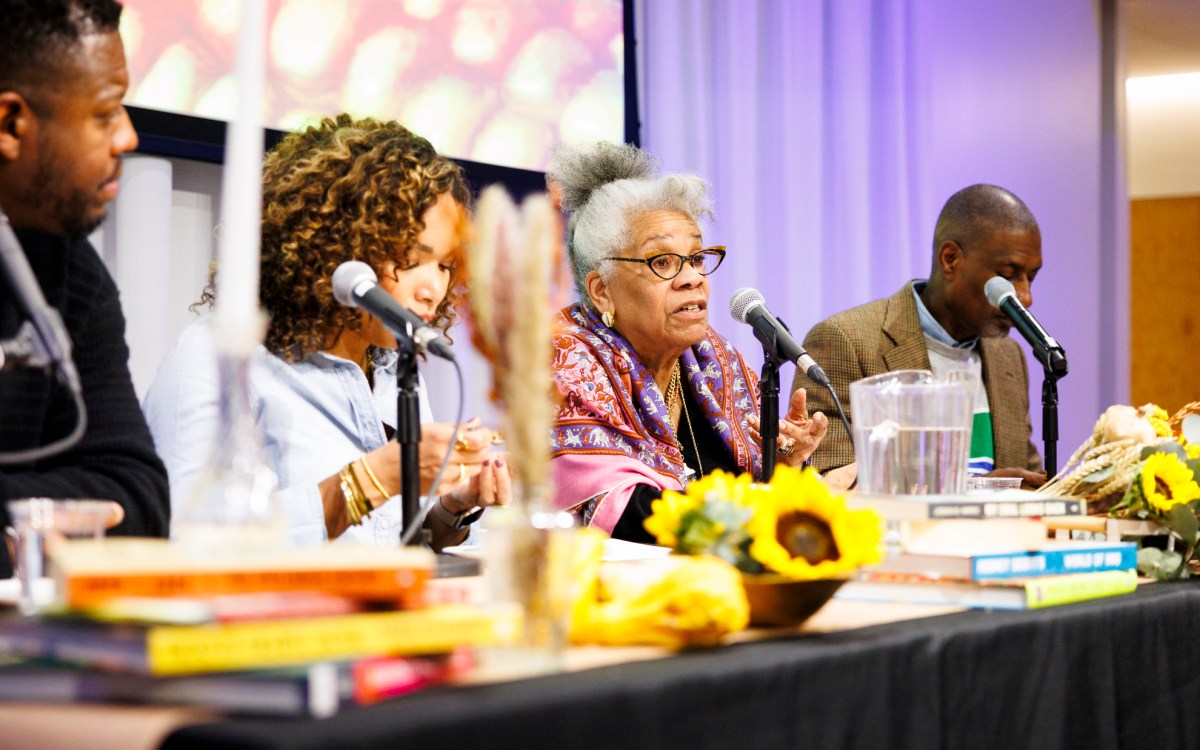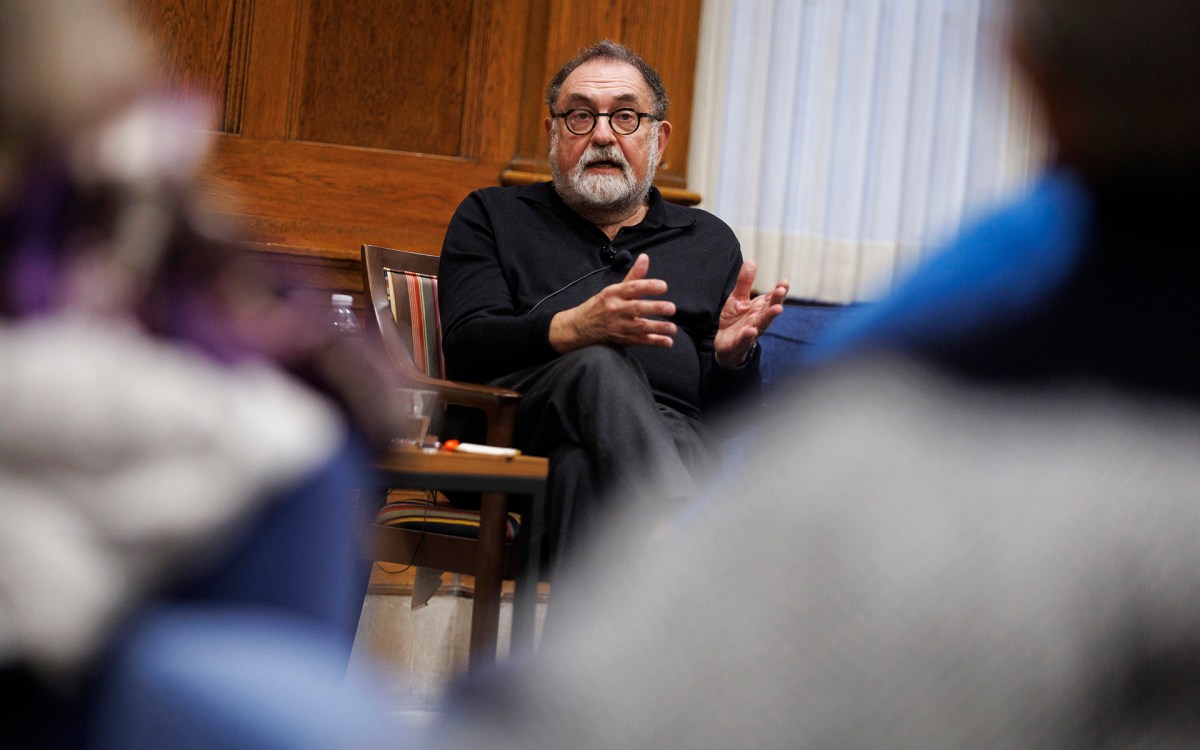Peabody preserves rare daguerreotypes
Thirty-six rare daguerreotype portraits from the Peabody Museum of Archaeology and Ethnology have recently been stabilized and preserved for future generations, in collaboration with the Weissman Preservation Center at Harvard University Library and the Mellon Foundation. Until photo conservators got to work, some daguerreotypes were nearly obscured by the deterioration of glass and other components, while others suffered from cracked or broken cases.
“It was an absolutely unique experience working with these,” said Elena Bulat, photo conservator at the center. “Daguerreotypes are such complex objects. There was a great variety of different material used together in a very tight environment: silver, copper, brass, velvet or silk, paper, leather, and wood.” The daguerreotypes are extremely delicate and required special care while handling. For example, the polished silver surface is very delicate and vulnerable. Even the soft touch of a cotton swab will permanently scratch it. “You want to hold your breath while doing a treatment. It’s a great responsibility for a conservator,” Bulat said.
Daguerreotypes are the earliest form of photography. The images were made on a two-layer plate (copper and silver), sensitized in silver iodide, and developed with the fumes from warmed mercury. They were usually matted, covered with glass, and sealed to prevent damage and tarnishing, creating a plate package. Most were also enclosed in a fabric-lined leatherette case. Conservators replaced corroded glass-fronted cases with modern borosilicate glass and applied new archival binding tape to keep the plate package together and protect the daguerreotype.
The daguerreotypes contained some surprises, too. Sandwiched inside one daguerreotype’s sealed brass frame were scraps of a 19th century Boston newspaper. Bulat says that “makes sense, because one of the photographers was from Boston.” The newspaper was apparently used to bind layers of the daguerreotype plate package together. Another surprise was revealed while photo-documenting various types of deterioration on the plates at high magnification: Some of the images of deterioration are beautiful enough to hang on a gallery wall. Conservation scientists from Harvard’s Straus Center for Conservation analyzed various types of corrosion on the glass and brass frames to understand the deterioration.
The daguerreotype treatment project began as part of a joint summer internship in 2007 between the Peabody Museum and the center. It quickly became an 18-month comprehensive preservation project, thanks to a multiyear grant from the Mellon Foundation in support of the Weissman Center.
The Peabody’s daguerreotype collection is unusual for its subject matter — South Carolina slaves, and unidentified Native American, Chinese, and Hindu people. “These daguerreotypes are extraordinary because of the enormous breadth of scholarly approaches they invite — from sociocultural and biological anthropology to the history of science, photography, and art, to American history, and immigration studies,” explained Peabody Museum Associate Curator of Visual Anthropology Ilisa Barbash. The daguerreotypes were apparently collected by scientist Louis Agassiz during the 1850s. Agassiz is best known for his accomplishments in glaciology and systematics, and as founder of Harvard’s Museum of Comparative Zoology.
History and art are intricately linked in “Wiyohpiyata: Lakota Images of the Contested West,” a new exhibit at Harvard’s Peabody Museum of Archaeology and Ethnology based on a collection of drawings by Native American warriors.
“It’s so rich. It’s such a complex, interesting document that has so many stories embedded in it,” said the show’s co-curator Castle McLaughlin of the “artists book” that inspired the exhibition.
The work consists of 77 pictures created during the 1860s and ’70s by a group of Native American warrior artists, most likely from the Lakota people. The volume was originally an accountant’s ledger belonging to a Montana gold miner (some of whose written entries are still visible), in which the Lakotas drew their images. Later, an illustrated preface was added and these various parts were bound into a “book” format.
Using a unique, multifaceted approach, the show incorporates a wide range of Lakota and Cheyenne artifacts from the museum’s ethnographic collection — including an array of audio and visual components and even certain smells like cedar — to create a complex sensory experience that simultaneously evokes and explores the historic and cultural significance of the vibrant pictures.
“The book inspired us to try and communicate through artful design and mixed media and to try and create a sensory exhibit … without a lot of words,” said McLaughlin, the museum’s associate curator of North American ethnography.
The images in the little, bound volume are captivating. Drawn in colored pencils, inks, and crayons, the detailed illustrations offer a vivid glimpse into a troubled era in the country’s past and an intimate — and rare — Native American perspective on U.S. territorial expansion.
Capturing the lives of Native American Plains Indians, the drawings largely depict scenes of warfare, with warriors on horseback charging fiercely into battle and engaging in deadly combat. A small selection of the drawings are dedicated to more pacific aspects of life on the Northern Plains and include images of a bison hunt and courting rituals between young Native American men and women.
Reportedly recovered in 1876 from a burial tipi on the Little Bighorn battlefield, the work was ultimately donated to Harvard’s Houghton Library. While the library was aware of the ledger, its real significance wasn’t realized until 2004.
The effectiveness of the new exhibit, said McLaughlin, is largely due to the work of co-curator Butch Thunder Hawk. A Hunkpapa Sioux artist who grew up on the Standing Rock Sioux Reservation in North Dakota studying tribal arts, Thunder Hawk was able to aesthetically articulate a Lakota worldview and response to the historic drawings, and — along with McLaughlin and exhibits director Sam Tager — designed the ambient installation accordingly. He also contributed a number of his own artworks to the exhibition.
“Thunder Hawk created an encompassing gallery environment that expresses the concept of “wiyohpiyata,” the Lakota word for the direction west,” noted McLaughlin in a recent article about the new installation. “Wiyohpiyata is both a celestial orientation and a concentration of natural and supernatural forces.”
Visitors will get a sense of the exhibit’s ambitiousness as they walk through the space and hear an approaching thunderstorm, a fixture in the Northern Plains. An ongoing, deep rumbling soundtrack and billowing airbrushed banner along the gallery’s ceiling will simulate the turbulent weather. (Thunder represented one of the most honored supernatural forces in the Lakota universe, one thought to govern warfare.)
A painted tipi liner, created from two elk hides, will serve as an example of a gathering spot of warrior societies. Arrows and spears embedded in an adjacent wall — some collected from the Little Big Horn battlefield — bring historic conflicts to dramatic life.
Through a juxtaposition of historic photographs, newspaper accounts, and handwritten documents, the exhibit also illustrates the intersection of 19th century Anglo-European and Lakota visual cultures.
The show will feature a series of video interviews with current members of the Standing Rock Sioux Tribe.
The exhibit, which opens April 3, is a result of collaboration between the Peabody Museum, the Standing Rock Sioux Tribe, and the Houghton Library.




